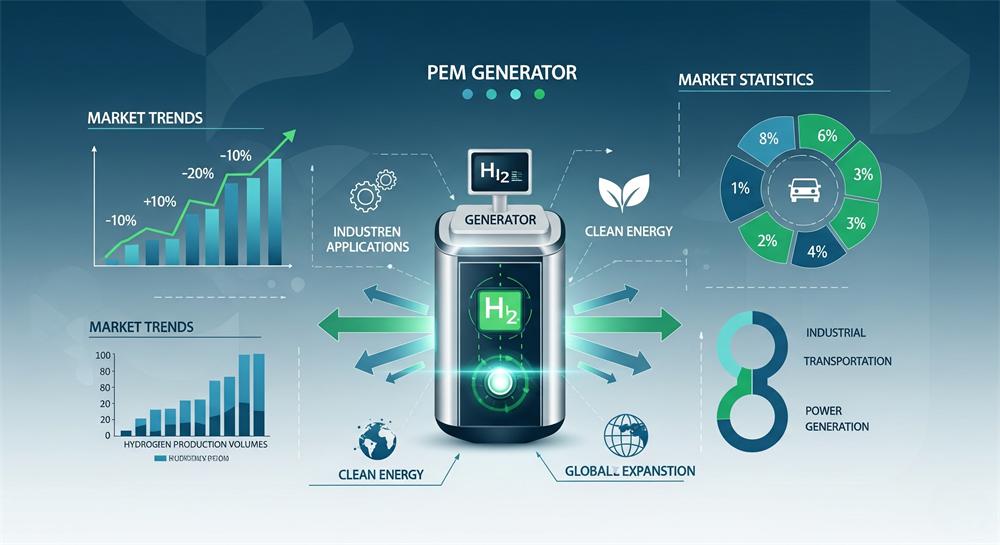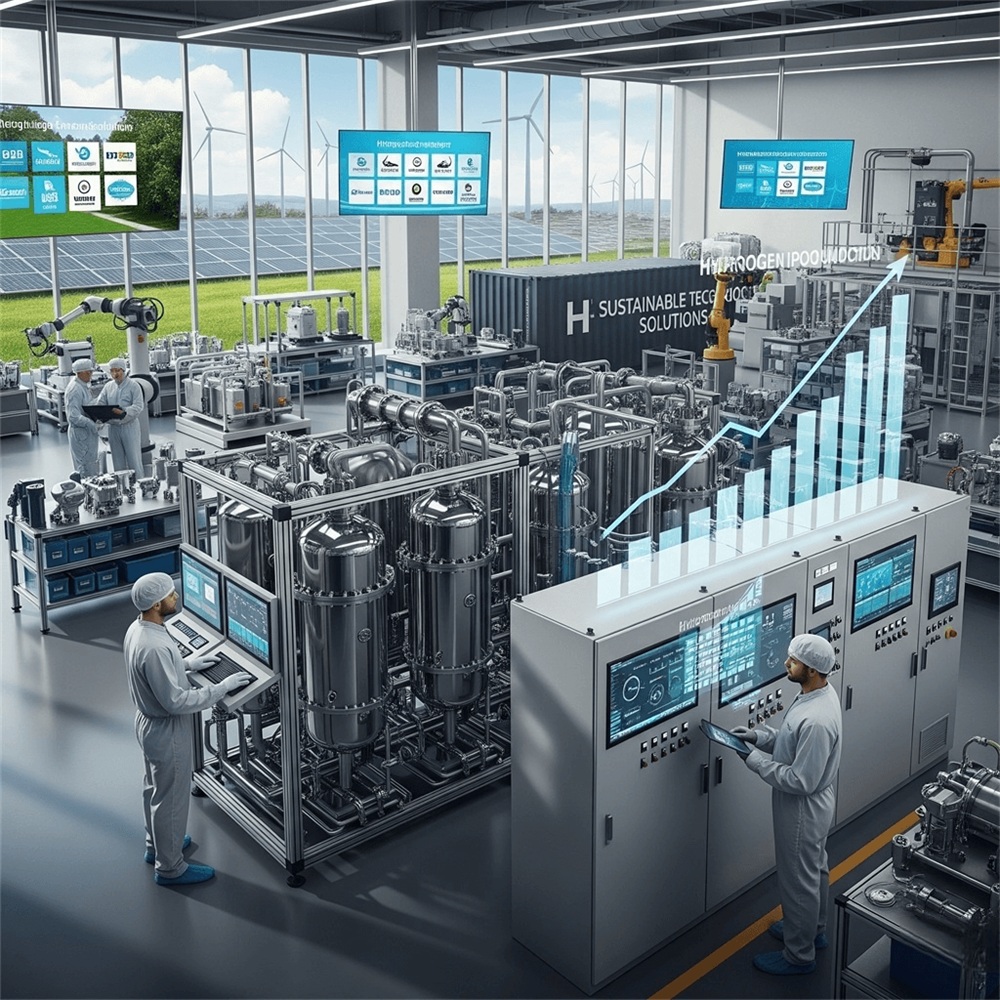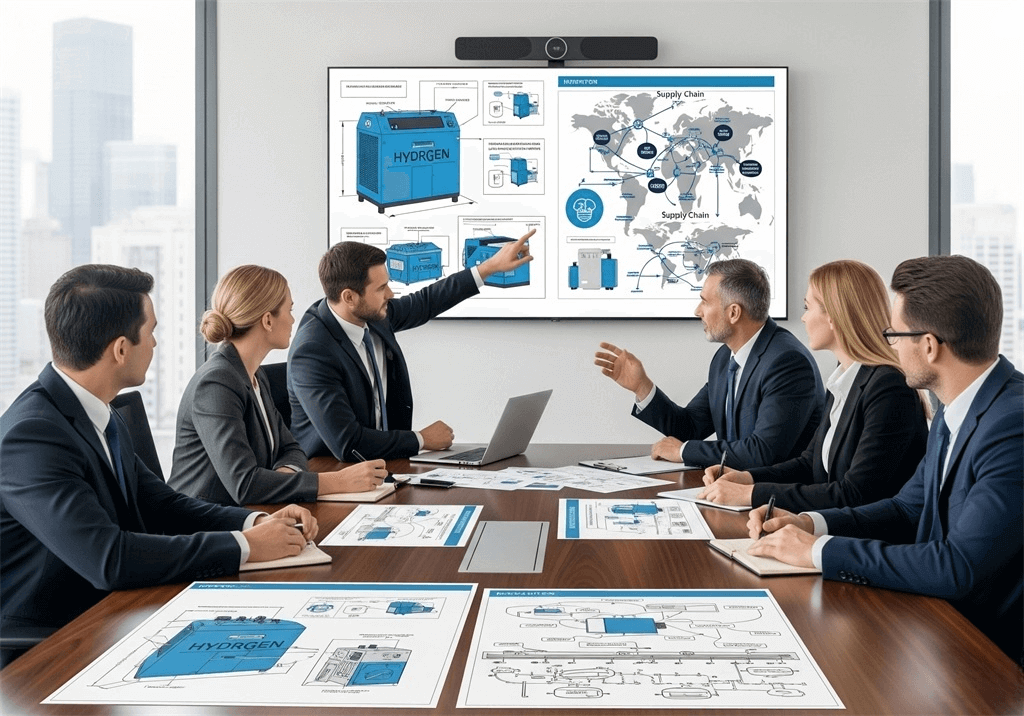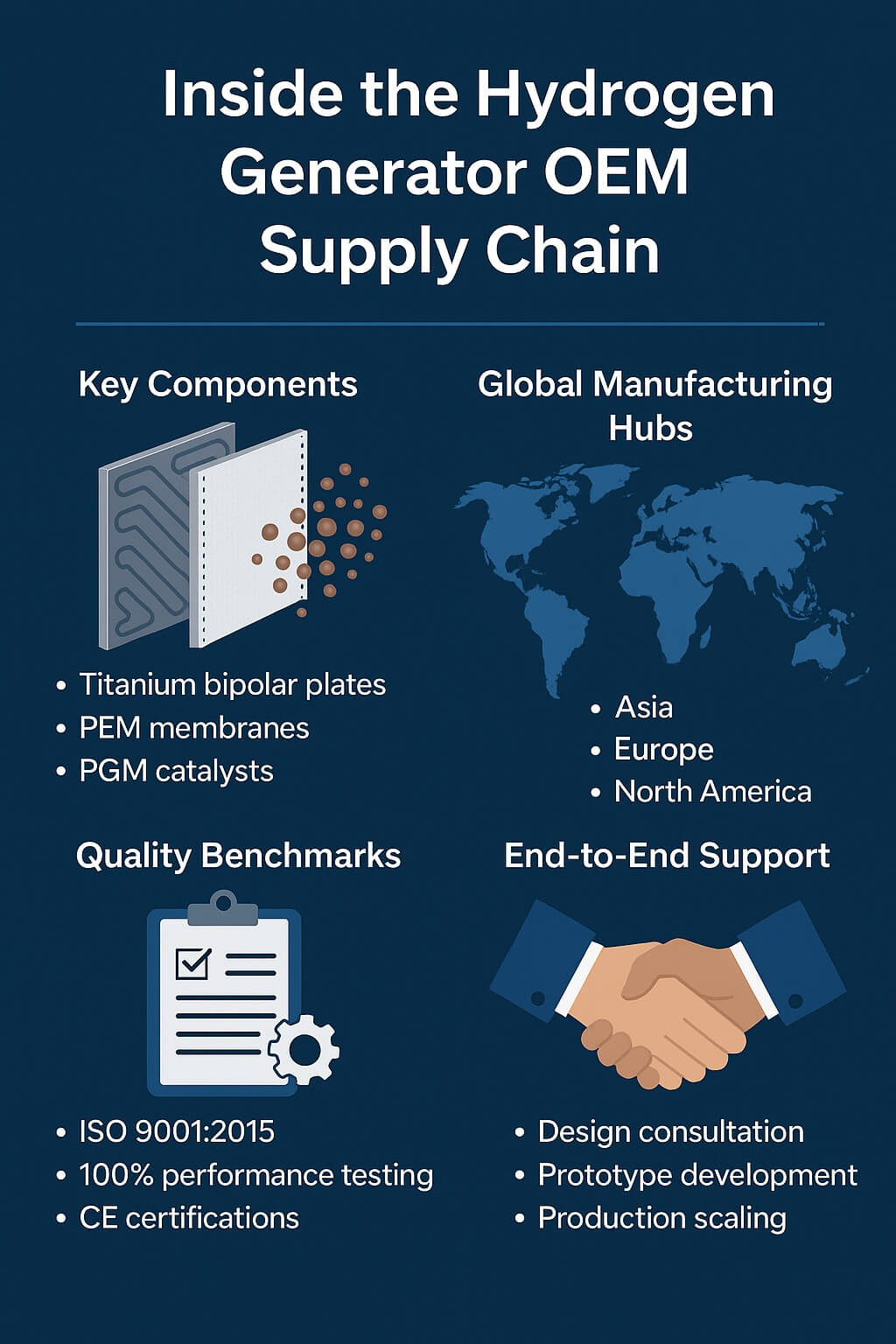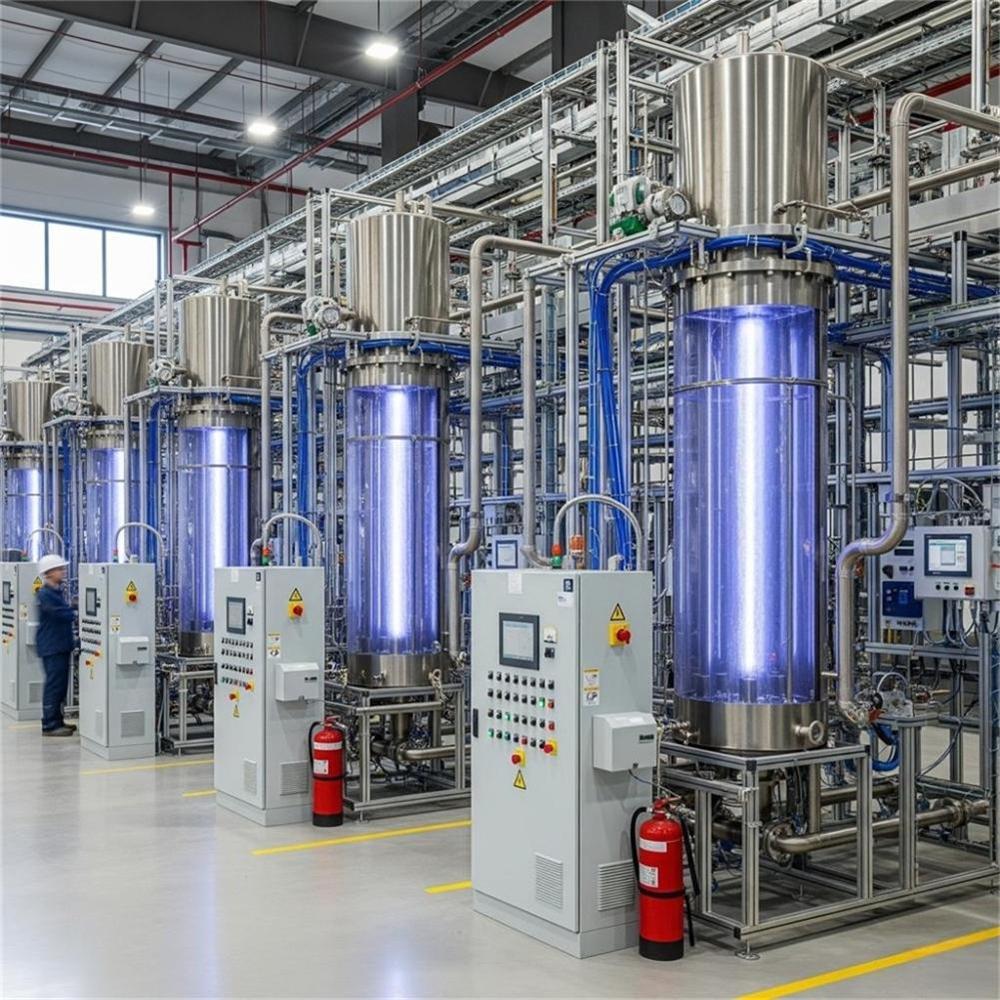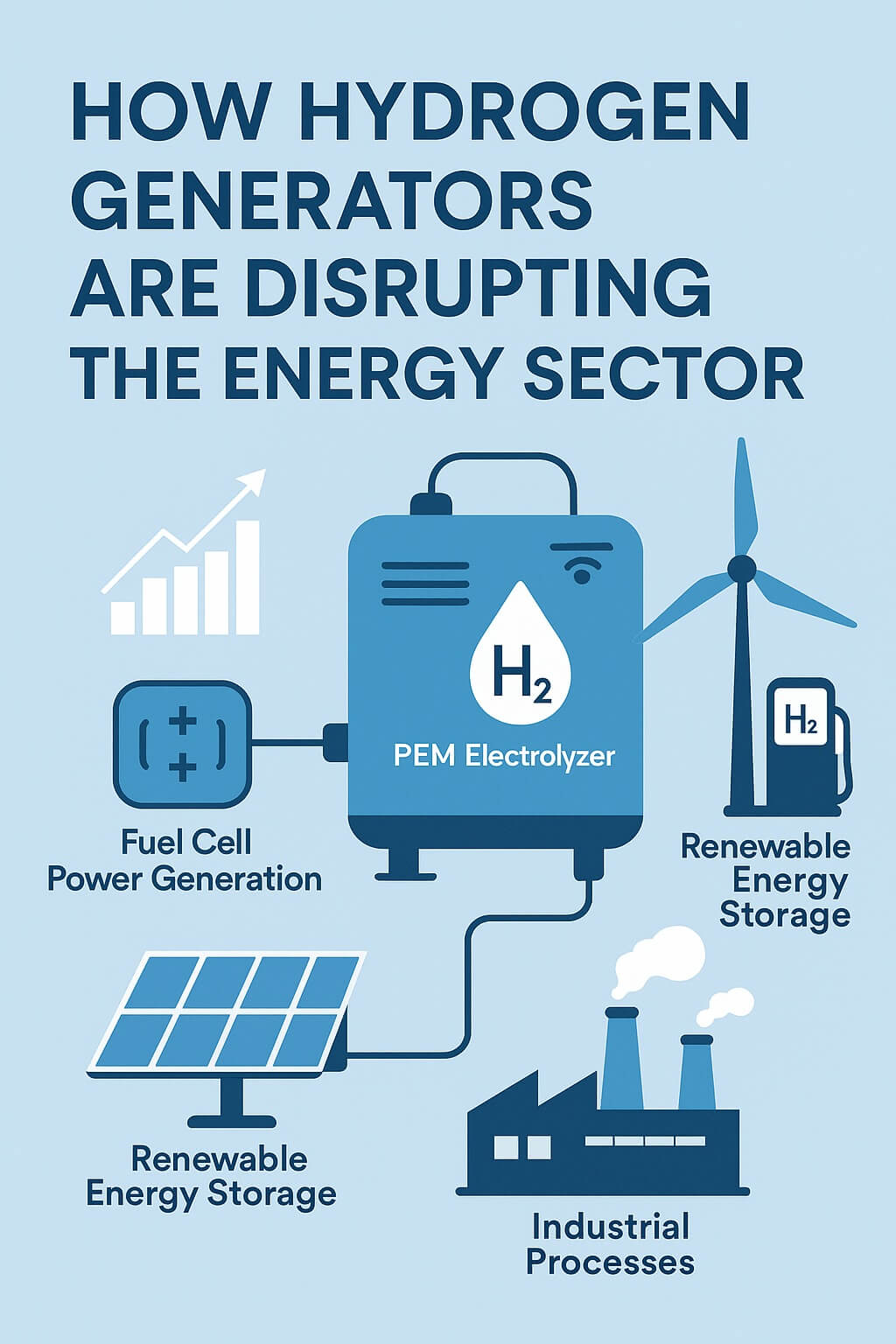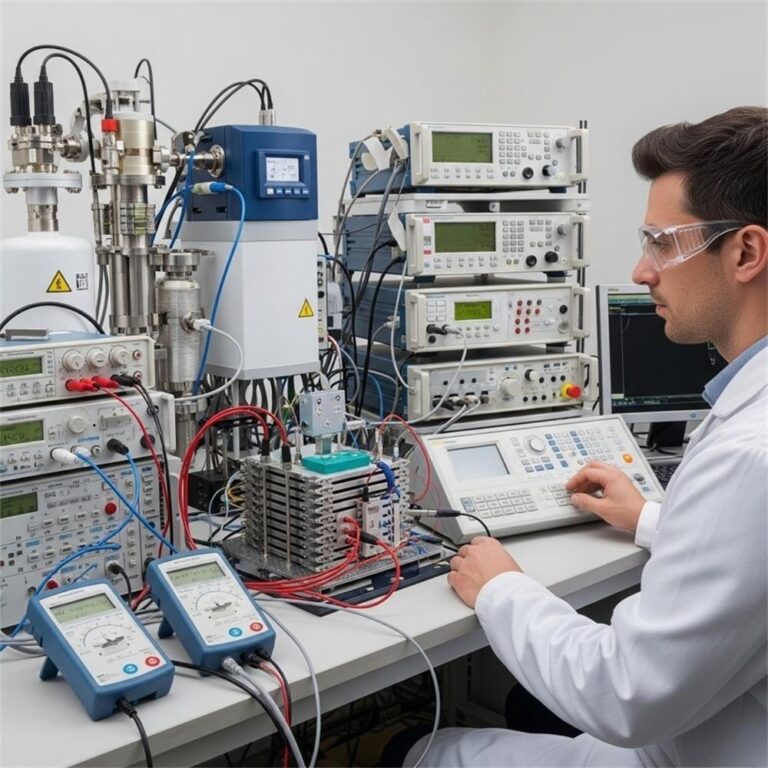I. Introduction
As the push toward sustainable energy intensifies, hydrogen has emerged as a cornerstone of clean fuel technology. Among the solutions gaining attention are PEM hydrogen generators—compact, efficient systems capable of producing hydrogen on-demand. For industries aiming to reduce emissions while improving performance, especially those using internal combustion engines or fuel cells, this technology represents a crucial advancement.
Hydrogen engines and fuel cells both require a reliable, high-purity hydrogen supply. Traditional methods of hydrogen transport and storage are often costly and inefficient. This is where PEM (Proton Exchange Membrane) hydrogen generators step in, offering localized, scalable hydrogen production solutions.
In this article, we’ll break down how PEM hydrogen generators work when integrated with engines and fuel cells. You’ll learn about their compatibility with various fuel cell types, performance advantages, installation processes, and where the technology is headed next.
II. How Engine-Integrated Hydrogen Systems Work
PEM hydrogen generators utilize electrolysis—a process where water (H₂O) is split into hydrogen (H₂) and oxygen (O₂) using electricity. Unlike older electrolysis systems, PEM electrolysis employs a solid polymer electrolyte that conducts protons while being impermeable to gases. This results in higher efficiency and greater hydrogen purity, both of which are essential for engine and fuel cell applications.
Key Components of an Engine-Integrated Hydrogen System Include:
- PEM Electrolyzer Stack: The core where electrolysis takes place.
- Water Purification Unit: Ensures feed water is free from contaminants.
- Power Electronics: Regulates voltage and current to the stack.
- Hydrogen Buffer Tank: Stores small amounts of produced hydrogen before delivery.
- Control Systems: Manage system operation, safety, and diagnostics.
Integration with Engines and Fuel Cells
For engines, the hydrogen is typically mixed with air and fed directly into the combustion chamber or used in dual-fuel configurations. In fuel cells, especially PEM fuel cells, the hydrogen is supplied at a constant pressure to ensure steady energy output.
Safety and Operational Considerations
PEM hydrogen generators are designed with multiple safety layers:
- Leak Detection Systems
- Over-Pressure Valves
- Remote Monitoring and Alarms
- Emergency Shutdown Features
This ensures safe operation even in high-demand industrial environments.
III. Fuel Cell Compatibility
Types of Fuel Cells
- PEMFC (Proton Exchange Membrane Fuel Cell)
- SOFC (Solid Oxide Fuel Cell)
- PAFC, MCFC and others
Among these, PEMFCs are the most compatible with PEM hydrogen generators due to their similar operating principles and low-temperature operation.
Why PEM Fuel Cells and PEM Hydrogen Generators Are a Perfect Match
- Operational Synergy: Both systems operate at low temperatures and are quick to start and stop.
- Compact Design: Ideal for mobile and off-grid applications.
- High Purity Output: PEM hydrogen generators produce hydrogen with purity levels up to 99.999%, suitable for sensitive fuel cell membranes.
Hydrogen Purity and Fuel Cell Longevity
Fuel cells demand ultra-pure hydrogen to avoid membrane degradation. PEM hydrogen generators use deionized water and advanced filtration systems to ensure contaminants are nearly eliminated.
Case Study: Industrial Forklift Deployment
A logistics company integrated PEM hydrogen generators with their fleet of hydrogen-powered forklifts. This led to:
- 30% Reduction in Downtime
- 20% Cost Savings Over Delivered Hydrogen
- Elimination of Pressurized Gas Cylinders
IV. Performance Benefits
Efficiency and Emissions
PEM hydrogen systems deliver hydrogen at the point of use, significantly reducing energy loss from transportation. Combined with engines or fuel cells, they improve:
- Combustion Efficiency
- Engine Torque
- Throttle Responsiveness
Most importantly, hydrogen combustion emits only water vapor, dramatically cutting down CO₂ and NOₓ emissions.
Reliability and Maintenance
PEM systems have few moving parts and are designed for long operational lifespans—often 40,000+ hours. Maintenance is typically limited to replacing water filters and checking for software updates.
Cost Advantages
- No Transportation Costs: On-site production eliminates hydrogen delivery expenses.
- Reduced Storage Needs: Real-time production reduces dependence on large storage tanks.
- Lower Operational Costs: Energy usage is optimized, especially when powered by renewable sources.
Environmental Impact and Scalability
Producing hydrogen using green electricity (e.g., solar or wind) makes the entire process carbon-neutral. PEM systems can be modularly expanded to support increasing engine demands or additional fuel cell stacks.
V. Installation Process
Step-by-Step Guide
- Site Assessment: Evaluate water, power, and spatial requirements.
- System Design: Select appropriately sized PEM generator and auxiliary systems.
- Permitting and Compliance: Ensure local regulations are met.
- Physical Installation: Connect power, water, and hydrogen interfaces.
- System Commissioning: Perform safety checks and functional tests.
- Staff Training: Train personnel for operation and emergency protocols.
Site Requirements
| Requirement | Description |
|---|---|
| Power | Typically requires 3-phase AC power (customizable) |
| Water | Requires deionized or distilled water supply |
| Ventilation | Necessary for safe dispersion of any potential leaks |
Timeline
- Assessment to Installation: 2-4 weeks
- Commissioning & Training: 1 week
- Operational Ramp-Up: Immediate after testing
VI. Future Developments
Ongoing R&D
Current R&D focuses on increasing membrane durability and reducing the use of expensive catalysts like platinum. Advances in stack architecture are also improving current densities and system longevity.
Emerging Trends
- Integration with Renewable Energy Grids
- Smart Grid Communication Capabilities
- Remote Management and Predictive Maintenance
Innovation in Hybrid Systems
PEM hydrogen generators are being paired with solar panels and wind turbines to create fully autonomous green hydrogen production sites. These systems are especially valuable in remote industrial or military locations.
Market Outlook
By 2030, the global hydrogen generation market is projected to surpass $200 billion, with PEM systems playing a significant role in transportation, logistics, and heavy industry.
VII. Conclusion
PEM hydrogen generators offer a transformative solution for industries seeking clean, efficient, and reliable hydrogen sources for engines and fuel cells. By producing hydrogen on-site, they reduce emissions, lower operational costs, and enhance energy security.
Hydrogen’s role in decarbonizing heavy-duty transportation and off-grid power generation is no longer a theory—it’s happening now. For procurement managers exploring sustainable upgrades, PEM technology is a future-proof investment.
Interested in learning how PEM hydrogen generators can benefit your operation? Download our free whitepaper or contact us for a personalized consultation.
FAQs
1. What is a PEM hydrogen generator? A PEM hydrogen generator produces hydrogen by splitting water into hydrogen and oxygen using electricity and a proton exchange membrane.
2. Can PEM hydrogen generators be used with any engine? They work best with hydrogen-capable engines and dual-fuel systems but require compatibility evaluation for each application.
3. How pure is the hydrogen produced? PEM systems typically produce hydrogen at 99.999% purity, suitable for sensitive applications like fuel cells.
4. Are PEM hydrogen generators safe for industrial use? Yes, they include built-in safety features like leak detection, pressure relief systems, and automated shutoffs.
5. How long does it take to install a PEM hydrogen system? Full installation and commissioning usually take 2-4 weeks depending on site complexity.
6. What maintenance is required? Minimal—mostly water filter changes, system diagnostics, and occasional software updates.

